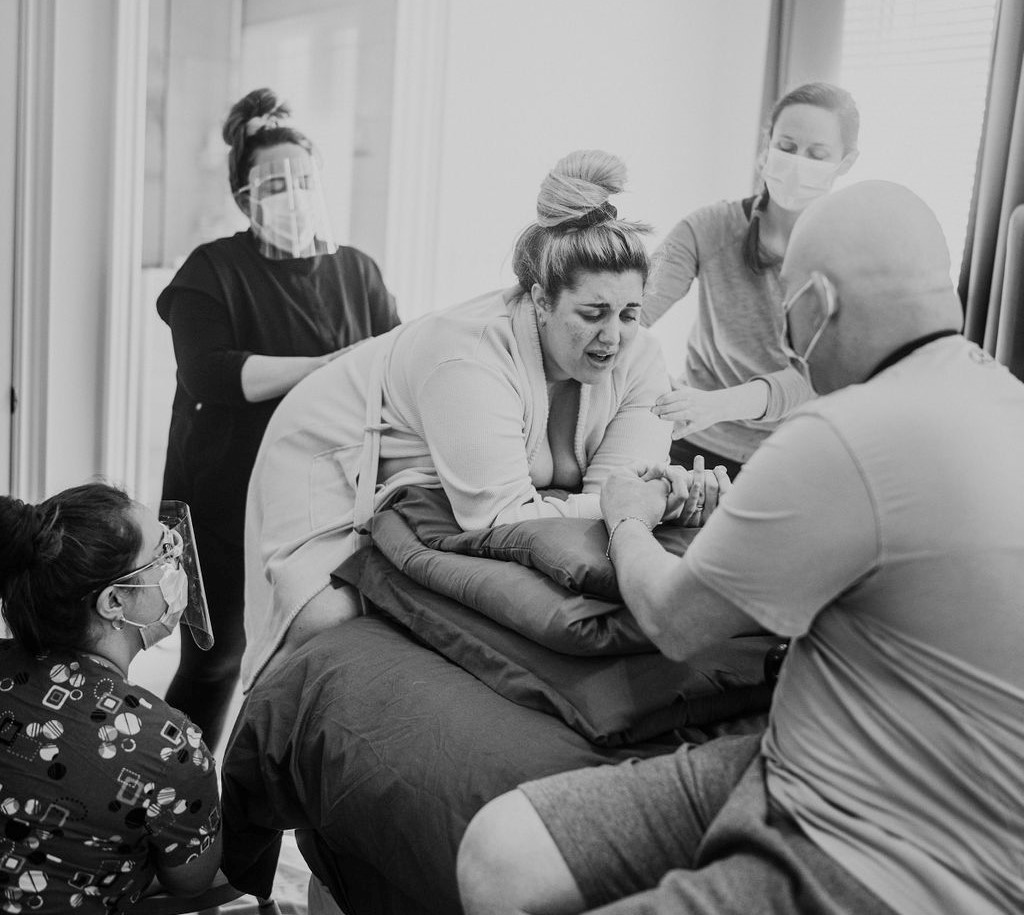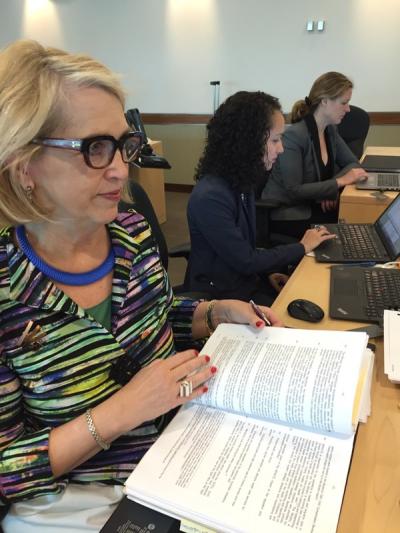Making waves: Legal precedent set by Ontario midwives cited in 66 cases involving discrimination

May 13, 2022
When midwives took the provincial government to court in 2013 it was a last-straw effort, having exhausted all other options to work with government to hold them accountable for devaluing midwifery work due to its deep association with women. Without any guarantee that years of being underpaid would be corrected, midwives filed a claim at the Human Rights Tribunal of Ontario, hoping their experience of systemic discrimination would be recognized and they might gain some traction towards gender justice.
Midwives won the merits of their case at the Tribunal in 2018, won substantial remedies from the Tribunal in 2020, and have determinedly held onto their gains through two appeals launched by the Ministry of Health. The Divisional Court unanimously upheld the Tribunal’s decision in midwives’ favour in 2020, and midwives are waiting on the decision of the Ontario Court of Appeal (expected in2022). The Tribunal ordered government to take concrete steps to close the gender pay gap for midwives, beginning with a 20 per cent compensation adjustment retroactive to 2011 – the year the government refused to implement an independent study recommending a 20 per cent pay increase and instead froze midwives' compensation for multiple years. To date, Ontario midwives have received approximately $126M in retroactive compensation to address discriminatory pay as a first step towards addressing almost a decade of discriminatory pay.
Gender wage gap may be narrowed, but not yet closed
The 20 per cent increase is only a starting point. The Tribunal has ordered the ministry and the AOM to conduct a joint compensation study to further assess and redress systemic gender bias in midwives' compensation, considering changes in the required skills, experience, responsibilities and working conditions that have emerged since the original claim was filed. The ministry has also received the results of the Tribunal-ordered intersectional Gender Based Analysis (GBA+) Report conducted by Canadian Equality Consulting. The GBA+ Report confirms that systemic gender discrimination, including "power, privilege, and oppression dynamics," continue to permeate the ministry's relationship with midwives; and that the ministry continues to fail to apply an intersectional gender lens to its policies, practices and decision-making with respect to midwives; and persists in its discriminatory "’gender blind’ approach" to budgeting and midwives' compensation.
When midwives filed their human rights application with the Tribunal in 2013, there was a sense that, if successful, the case would have a ripple effect on human rights jurisprudence beyond the midwifery sector. This sense has proven correct.
The GBA+ Report further notes that this "absence of a gender-sensitive and integrated approach in policy and practice design, interpretation and implementation has resulted in perpetuating historical disadvantages and discrimination that midwives have experienced." In short, notwithstanding the Tribunal's rulings and orders since 2018, the GBA+ Report underscores serious and persistent violations of midwives' human rights. The GBA+ Report has identified the changes needed to transform the ministry's policies and practices to ensure midwives are not discriminated against because their work is so deeply associated with women. It’s not only midwifery that stands to be impacted, however; changes in policies and practices at the systems level have the potential to correct gender-based injustices experienced in other government-funded industries.
Ripple effects extend far beyond midwifery sector
When midwives filed their human rights application with the Tribunal in 2013 there was a sense that, if successful, the case would have a ripple effect on human rights jurisprudence beyond the midwifery sector. This sense has proven correct: the various court rulings found in midwives’ favour have been cited in 66 other cases and have inspired other equity-deserving groups to seek justice.

One of the significant findings in Ontario midwives’ case was the affirmation that systemic discrimination could arise from unconscious actions and biases. The implication, then, is that a female-predominant group of workers, such as midwives, requires proactively defined objective, evidence-based, gender-sensitive compensation-setting practices. The Ministry of Health claimed they did not enable systemic discrimination because it was not their intention to be discriminatory, asserting instead they took a "gender blind" approach to midwives' compensation. Tribunal findings determined this to be insufficient. The Tribunal ruled that the ministry’s failure to proactively take into account the gendered nature of midwifery and to monitor for the well-known effects of systemic gender bias when setting midwives’ compensation contributed to the adverse gender impacts experienced by midwives. In other words, employers and compensation-setters like government have a proactive duty to ensure their compensation-setting practices for gender-segregated workers and professions are free of systemic gender bias.
Ontario midwives’ case reaffirmed that systemic discrimination takes place in an interconnected web that can include conduct, action, inaction, policies, practices, systems and attitudes. Connections between the various threads of the web may not always be obvious, but when understood together, they can reveal how unconscious discrimination is often woven into very structure of the system.
Midwives’ case also established clarity about how systematic discrimination is identified in legal proceedings. The Human Rights Code had already established that systemic discrimination is not isolated to a single incident. Midwives’ case went further, creating a precedent that when a legal proceeding seeks to determine whether discrimination occurred, the incidents in question must be understood within the historical context in which they occurred, including the policies and attitudes held by those involved. Ontario midwives’ case reaffirmed that systemic discrimination takes place in an interconnected web that can include conduct, action, inaction, policies, practices, systems and attitudes. Connections between the various threads of the web may not always be obvious, but when understood together, they can reveal how unconscious discrimination is often woven into very structure of the system.
The Tribunal used midwives’ case as a precedent in JL v. Greater Essex District School Board when it ruled in favour of the student complainant – who alleged they were discriminated against based on their disability. The Tribunal referred to midwives’ case to establish the importance of considering systemic discrimination as a series of events, stating, “the learning needs and capacities of students in terms of their developmental stages and changing needs… requires such a contextual approach.”
The Tribunal further referred to midwives’ case in examining the duty of the government to take proactive steps to prevent discrimination in the creation and implementation of policies and procedures in First Nations Child & Family Caring Society of Canada et al. v. Attorney General of Canada (representing the Minister of Indigenous and Northern Affairs Canada).
Ontario midwives should be proud of the path forged and the legacy of creating precedent that advances the law on systemic discrimination in general and systemic gender discrimination in compensation in particular. This legacy is not only about closing the gender wage gap for midwives, but about blazing a trail for equity-deserving people and communities to redress systemic discrimination.
The Association of Ontario Midwives recognizes Mary Cornish for championing pay equity and leading the legal action for midwives at the Tribunal, alongside the following team of advocates: Adrienne Telford, Lara Koerner-Yeo, Jackie Esmonde, Jennifer Quito, Lisa Leinveer, Andrea Sobko and the many articling students and Cavalluzzo staff who have contributed to this work.
